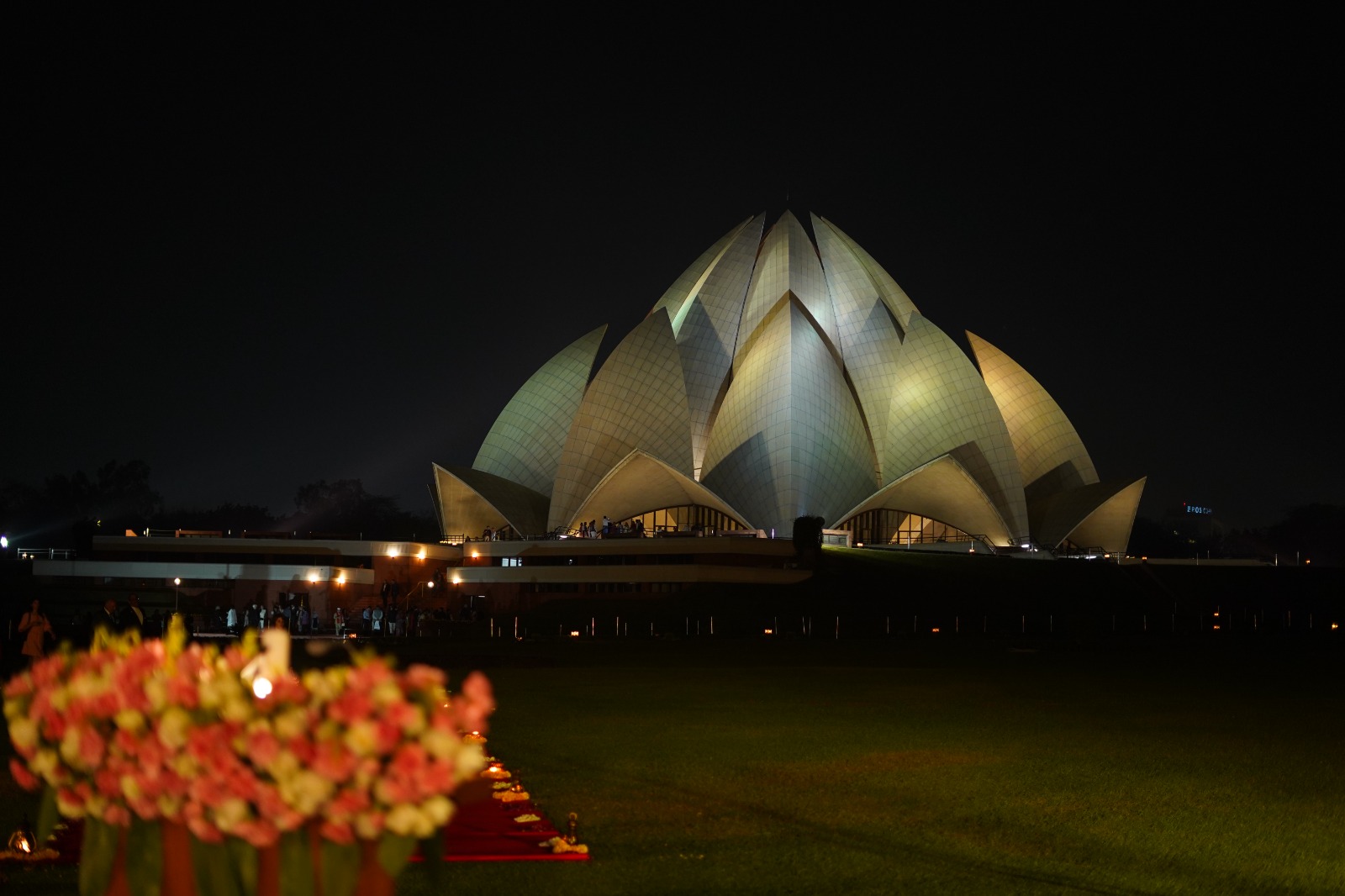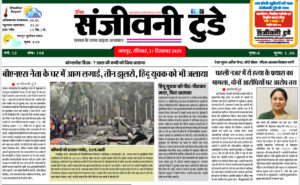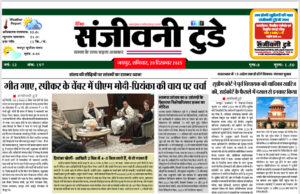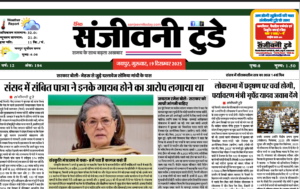On 9th July 2024 i.e. 17 Raḥmat, 181 B.E. Baháʼís Commemorate 174th Anniversary of the Martyrdom of the Báb as a Holy Day throughout the world.
Baháʼís commemorate the Martyrdom of the Báb executed by firing squad in Tabriz, Persia, at noon on July 9th in 1850.
Baháʼís observe His Martyrdom at noon with readings and prayers from the Baháʼí Scriptures. It has become a holy day of rest when Baháʼís should refrain from work.
The commemoration of the miraculous events surrounding the execution of the Báb, the harbinger of the Baha’i faith, where he is considered a Manifestation of God
.
The most turbulent period of the Heroic Age of the new Dispensation was rapidly attaining its culmination. The cup of bitter woes which the Herald of that Dispensation had tasted was now full to overflowing. Indeed, He Himself had already foreshadowed His own approaching death. In the Kitáb-i-Panj-Sha‘n, one of His last works, He had alluded to the fact that the sixth Naw-Rúz after the declaration of His mission would be the last He was destined to celebrate on earth. In His interpretation of the letter Há, He had voiced His craving for martyrdom, while in the Qayyúmu’l-Asmá’ He had actually prophesied the inevitability of such a consummation of His glorious career. Forty days before His final departure from Chihríq He had even collected all the documents in His possession, and placed them, together with His pen-case, His seals and His rings, in the hands of Mullá Báqir, a Letter of the Living, whom He instructed to entrust them to Mullá ‘Abdu’l-Karím-i-Qazvíní, surnamed Mírzá Ahmad, who was to deliver them to Bahá’u’lláh in Tihrán.

The siege of Zanján was still in progress when he, dispensing with an explicit order from his sovereign, and acting independently of his counsellors and fellow-ministers, dispatched his order to Prince Hamzih Mírzá, the Hishmatu’d-Dawlih, the governor of Ádhirbáyján, instructing him to execute the Báb. Fearing lest the infliction of such condign punishment in the capital of the realm would set in motion forces he might be powerless to control, he ordered that his Captive be taken to Tabríz, and there be done to death. Confronted with a flat refusal by the indignant Prince to perform what he regarded as a flagitious crime, the Amír-Nizám commissioned his own brother, Mírzá Hasan Khán, to execute his orders. The usual formalities designed to secure the necessary authorization from the leading mujtahids of Tabríz were hastily and easily completed. Neither Mullá Muhammad-i-Mamáqání, however, who had penned the Báb’s death-warrant on the very day of His examination in Tabríz, nor Hájí Mírzá Báqir, nor Mullá Murtadá-Qulí, to whose houses their Victim was ignominiously led by the farrásh-báshí, by order of the Grand Vizir, condescended to meet face to face their dreaded Opponent.

Sám Khán accordingly set out to discharge his duty. A spike was driven into a pillar which separated two rooms of the barracks facing the square. Two ropes were fastened to it from which the Báb and one of his disciples, the youthful and devout Mírzá Muhammad-‘Alí-i-Zunúzí, surnamed Anís, who had previously flung himself at the feet of his Master and implored that under no circumstances he be sent away from Him, were separately suspended. The firing squad ranged itself in three files, each of two hundred and fifty men. Each file in turn opened fire until the whole detachment had discharged its bullets. So dense was the smoke from the seven hundred and fifty rifles that the sky was darkened. As soon as the smoke had cleared away the astounded multitude of about ten thousand souls, who had crowded onto the roof of the barracks, as well as the tops of the adjoining houses, beheld a scene which their eyes could scarcely believe.

The Báb had vanished from their sight! Only His companion remained, alive and unscathed, standing beside the wall on which they had been suspended. The ropes by which they had been hung alone were severed. “The Siyyid-i-Báb has gone from our sight!” cried out the bewildered spectators. A frenzied search immediately ensued. He was found, unhurt and unruffled, in the very room He had occupied the night before, engaged in completing His interrupted conversation with His amanuensis. “I have finished My conversation with Siyyid Husayn” were the words with which the Prisoner, so providentially preserved, greeted the appearance of the farrásh-báshí, “Now you may proceed to fulfill your intention.” Recalling the bold assertion his Prisoner had previously made, and shaken by so stunning a revelation, the farrásh-báshí quitted instantly the scene, and resigned his post.
Sám Khán, likewise, remembering, with feelings of awe and wonder, the reassuring words addressed to him by the Báb, ordered his men to leave the barracks immediately, and swore, as he left the courtyard, never again, even at the cost of his life, to repeat that act. Áqá Ján-i-Khamsih, colonel of the body-guard, volunteered to replace him. On the same wall and in the same manner the Báb and His companion were again suspended, while the new regiment formed in line and opened fire upon them. This time, however, their breasts were riddled with bullets, and their bodies completely dissected, with the exception of their faces which were but little marred. “O wayward generation!” were the last words of the Báb to the gazing multitude, as the regiment prepared to fire its volley, “Had you believed in Me every one of you would have followed the example of this youth, who stood in rank above most of you, and would have willingly sacrificed himself in My path. The day will come when you will have recognized Me; that day I shall have ceased to be with you.”
The Báb (the word means ‘Gate’ – that through which another would come) was the title adopted by ʿAli Muhammad Shirāzi, a 19th century Persian religious leader and Founder of the Bábi movement. He and His followers were persecuted by the religious leaders of His country and this culminated in His being publicly shot by a firing squad in 1850. However, Bahá’í’s believe that His martyrdom was the occasion of a miracle witnessed by thousands. They hold that the first attempt to shoot the Báb resulted only in severing the ropes by which he was bound and freeing Him so that He could conclude an important conversation with a follower; after the Báb’s death His followers almost unanimously accepted Bahá’u’lláh, which means “The Glory of God”.
As mentioned above, martyrdom of the Báb, observed this year on July 9, is a commemoration of the martyrdom of one of the Twin Manifestations of God and one of the Founders of the Baháʼí Faith, which began in Iran in the year 1844.
On this day, the Baháʼís recount the execution of the Báb who was charged with the crime of apostasy in the year 1850 in the Persian Empire and then imprisoned along with His followers.
Sayyed ʻAlí Muḥammad Shírází was a merchant who lived in the city of Shiraz and worked as a merchant in the coastal city of Bushehr. At the age of 30, He was accused of being an apostate and was immediately imprisoned and ordered to be executed. There were many eyewitness accounts of miracles surrounding His execution and the following events, all of which are reflected in the way that Martyrdom of the Báb is commemorated.
While the convulsions of Mázindarán and Nayríz were pursuing their bloody course the Grand Vizir of Násiri’d-Dín Sháh, anxiously pondering the significance of these dire happenings, and apprehensive of their repercussions on his countrymen, his government and his sovereign, was feverishly revolving in his mind that fateful decision which was not only destined to leave its indelible imprint on the fortunes of his country, but was to be fraught with such incalculable consequences for the destinies of the whole of mankind. The repressive measures taken against the followers of the Báb, he was by now fully convinced, had but served to inflame their zeal, steel their resolution and confirm their loyalty to their persecuted Faith. The Báb’s isolation and captivity had produced the opposite effect to that which the Amír-Nizám had confidently anticipated. Gravely perturbed, he bitterly condemned the disastrous leniency of his predecessor, Hájí Mírzá Áqásí, which had brought matters to such a pass. A more drastic and still more exemplary punishment, he felt, must now be administered to what he regarded as an abomination of heresy which was polluting the civil and ecclesiastical institutions of the realm. Nothing short, he believed, of the extinction of the life of Him Who was the fountain-head of so odious a doctrine and the driving force behind so dynamic a movement could stem the tide that had wrought such havoc throughout the land.
Immediately before and soon after this humiliating treatment meted out to the Báb two highly significant incidents occurred, incidents that cast an illuminating light on the mysterious circumstances surrounding the opening phase of His martyrdom. The farrásh-báshí had abruptly interrupted the last conversation which the Báb was confidentially having in one of the rooms of the barracks with His amanuensis Siyyid Husayn, and was drawing the latter aside, and severely rebuking him, when he was thus addressed by his Prisoner: “Not until I have said to him all those things that I wish to say can any earthly power silence Me. Though all the world be armed against Me, yet shall it be powerless to deter Me from fulfilling, to the last word, My intention.” To the Christian Sám Khán—the colonel of the Armenian regiment ordered to carry out the execution—who, seized with fear lest his act should provoke the wrath of God, had begged to be released from the duty imposed upon him, the Báb gave the following assurance: “Follow your instructions, and if your intention be sincere, the Almighty is surely able to relieve you of your perplexity.”
The very moment the shots were fired a gale of exceptional violence arose and swept over the city. From noon till night a whirlwind of dust obscured the light of the sun, and blinded the eyes of the people. In Shíráz an “earthquake,” foreshadowed in no less weighty a Book than the Revelation of St. John, occurred in 1268 A.H. which threw the whole city into turmoil and wrought havoc amongst its people, a havoc that was greatly aggravated by the outbreak of cholera, by famine and other afflictions. In that same year no less than two hundred and fifty of the firing squad, that had replaced Sám Khán’s regiment, met their death, together with their officers, in a terrible earthquake, while the remaining five hundred suffered, three years later, as a punishment for their mutiny, the same fate as that which their hands had inflicted upon the Báb. To insure that none of them had survived, they were riddled with a second volley, after which their bodies, pierced with spears and lances, were exposed to the gaze of the people of Tabríz. The prime instigator of the Báb’s death, the implacable Amír-Nizám, together with his brother, his chief accomplice, met their death within two years of that savage act.
On the evening of the very day of the Báb’s execution, which fell on the ninth of July 1850 (28th of Sha‘bán 1266 A.H.), during the thirty-first year of His age and the seventh of His ministry, the mangled bodies were transferred from the courtyard of the barracks to the edge of the moat outside the gate of the city. Four companies, each consisting of ten sentinels, were ordered to keep watch in turn over them. On the following morning the Russian Consul in Tabríz visited the spot, and ordered the artist who had accompanied him to make a drawing of the remains as they lay beside the moat. In the middle of the following night a follower of the Báb, Hájí Sulaymán Khán, succeeded, through the instrumentality of a certain Hájí Alláh-Yár, in removing the bodies to the silk factory owned by one of the believers of Mílán, and laid them, the next day, in a specially made wooden casket, which he later transferred to a place of safety. Meanwhile the mullás were boastfully proclaiming from the pulpits that, whereas the holy body of the Immaculate Imám would be preserved from beasts of prey and from all creeping things, this man’s body had been devoured by wild animals. No sooner had the news of the transfer of the remains of the Báb and of His fellow-sufferer been communicated to Bahá’u’lláh than He ordered that same Sulaymán Khán to bring them to Tihrán, where they were taken to the Imám-Zádih-Hasan, from whence they were removed to different places, until the time when, in pursuance of ‘Abdu’l-Bahá’s instructions, they were transferred to the Holy Land, and were permanently and ceremoniously laid to rest by Him in a specially erected mausoleum on the slopes of Mt. Carmel.
Thus ended a life which posterity will recognize as standing at the confluence of two universal prophetic cycles, the Adamic Cycle stretching back as far as the first dawnings of the world’s recorded religious history and the Bahá’í Cycle destined to propel itself across the unborn reaches of time for a period of no less than five thousand centuries. The apotheosis in which such a life attained its consummation marks, as already observed, the culmination of the most heroic phase of the Heroic Age of the Bahá’í Dispensation. It can, moreover, be regarded in no other light except as the most dramatic, the most tragic event transpiring within the entire range of the first Bahá’í century. Indeed it can be rightly acclaimed as unparalleled in the annals of the lives of all the Founders of the world’s existing religious systems.
Martyrdom in the Baháʼí Faith is the act of sacrificing one’s life in the service of humanity and in the name of God. In Hidden Words, Baháʼu’lláh’s revelation incites believers towards martyrdom: “O son of being! Seek a martyr’s death in My path, content with My pleasure … To tinge thy hair with thy blood is greater in My sight than the creation of the universe and the light of both worlds. Strive then to attain this, O servant!”
However, Baháʼu’lláh, the Prophet-Founder of the Baháʼí Faith, discouraged the literal meaning of sacrificing one’s life, and instead offered the explanation that martyrdom is devoting oneself to service for humanity. ʻAbdu’l-Bahá, Baháʼu’lláh’s son and appointed interpreter, explained that the truest form of martyrdom is a lifelong sacrifice to serve humanity in the name of God. While the Baháʼí Faith exalts the station of its martyrs, martyrdom is not something that Baháʼís are encouraged to pursue; instead one is urged to value and protect one’s life.
The Báb, acclaimed by Bahá’u’lláh as the “Essence of Essences,” the “Sea of Seas,” the “Point round Whom the realities of the Prophets and Messengers revolve,” “from Whom God hath caused to proceed the knowledge of all that was and shall be,” Whose “rank excelleth that of all the Prophets,” and Whose “Revelation transcendeth the comprehension and understanding of all their chosen ones,” had delivered His Message and discharged His mission. He Who was, in the words of ‘Abdu’l-Bahá, the “Morn of Truth” and “Harbinger of the Most Great Light,” Whose advent at once signalized the termination of the “Prophetic Cycle” and the inception of the “Cycle of Fulfillment,” had simultaneously through His Revelation banished the shades of night that had descended upon His country, and proclaimed the impending rise of that Incomparable Orb Whose radiance was to envelop the whole of mankind. He, as affirmed by Himself, “the Primal Point from which have been generated all created things,” “one of the sustaining pillars of the Primal Word of God,” the “Mystic Fane,” the “Great Announcement,” the “Flame of that supernal Light that glowed upon Sinai,” the “Remembrance of God” concerning Whom “a separate Covenant hath been established with each and every Prophet” had, through His advent, at once fulfilled the promise of all ages and ushered in the consummation of all Revelations. He the “Qá’im” (He Who ariseth) promised to the Shí‘ahs, the “Mihdí” (One Who is guided) awaited by the Sunnís, the “Return of John the Baptist” expected by the Christians, the “Ushídar-Máh” referred to in the Zoroastrian scriptures, the “Return of Elijah” anticipated by the Jews, Whose Revelation was to show forth “the signs and tokens of all the Prophets”, Who was to “manifest the perfection of Moses, the radiance of Jesus and the patience of Job” had appeared, proclaimed His Cause, been mercilessly persecuted and died gloriously….”The clarion-call addressed to the “concourse of kings and of the sons of kings,” marking the inception of a process which, accelerated by Bahá’u’lláh’s subsequent warnings to the entire company of the monarchs of East and West, was to produce so widespread a revolution in the fortunes of royalty, had been raised in the Qayyúmu’l-Asmá’. The “Order,” whose foundation the Promised One was to establish in the Kitáb-i-Aqdas, and the features of which the Center of the Covenant was to delineate in His Testament, and whose administrative framework the entire body of His followers are now erecting, had been categorically announced in the Persian Bayán. The laws which were designed, on the one hand, to abolish at a stroke the privileges and ceremonials, the ordinances and institutions of a superannuated Dispensation, and to bridge, on the other, the gap between an obsolete system and the institutions of a world-encompassing Order destined to supersede it, had been clearly formulated and proclaimed… The nucleus of the divinely ordained, world-embracing Community—a Community whose infant strength had already plucked asunder the fetters of Shí‘ah orthodoxy, and which was, with every expansion in the range of its fellowship, to seek and obtain a wider and still more significant recognition of its claims to be the world religion of the future, had been formed and was slowly crystallizing. And, lastly, the seed, endowed by the Hand of Omnipotence with such vast potentialities, though rudely trampled under foot and seemingly perished from the face of the earth, had, through this very process, been vouchsafed the opportunity to germinate and remanifest itself, in the shape of a still more compelling Revelation—a Revelation destined to blossom forth, in a later period into the flourishing institutions of a world-wide administrative System, and to ripen, in the Golden Age as yet unborn, into mighty agencies functioning in consonance with the principles of a world-unifying, world-redeeming Order.
(God Passes By)
The Bahaʼi Faith is relatively new, teaching the essential worth of all religions and the unity of all people. Although it originated less than 200 years ago, the Baha’i Faith is considered one of the world’s major religions and today has about 7 million followers globally.
Compiled by
Jaya Raju Thota, Greater Visakhapatnam, INDIA









